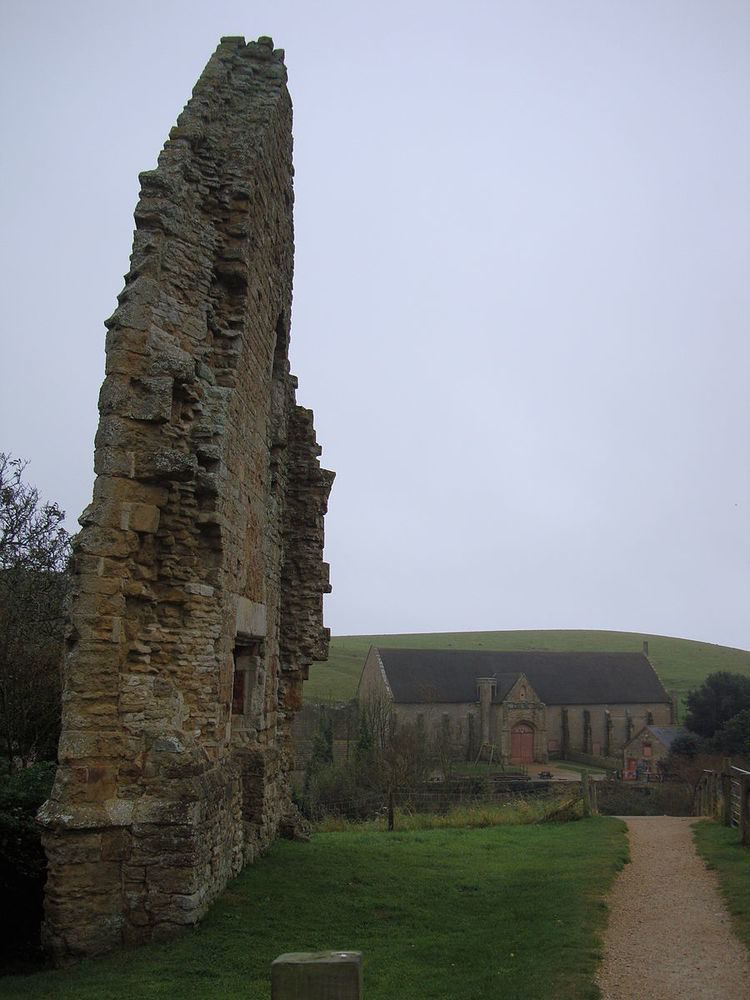Order Benedictines Public access yes | Phone +44 1793 414926 Disestablished 1538 | |
 | ||
Visible remains tithe barn, parts of a building (possibly the abbot's house) Address Market St, Abbotsbury, Weymouth DT3 4JJ, UK Similar St Catherine's Chapel - A, Cranborne Priory, St Ives Priory, Cerne Abbey, Lapley Priory | ||
Abbotsbury Abbey, dedicated to Saint Peter, was a Benedictine monastery in the village of Abbotsbury in Dorset, England. The abbey was founded in the 11th century by King Cnut's thegn Orc and his wife Tola, who handsomely endowed the monastery with lands in the area. The abbey prospered and became a local centre of power, controlling eight manor houses and villages. During the later Middle Ages, the abbey suffered much misfortune. In the time of the dissolution of the monasteries, the last abbot surrendered the abbey and the site was given to Sir Giles Strangways.
Contents
Today, the abbey's remains, and those of the nearby St Catherine's Chapel, are in the guardianship of English Heritage.
Foundation
The first reference to the site of Abbotsbury may be in a charter of King Edmund (r. 939-946) recording a grant of five hides of land at Abbedesburi to the thegn Sigewulf. The name (Abbedesburi) may suggest that the land had once belonged to an abbot. During the reign of King Cnut (r. 1016–1035), the Scandinavian thegn Orc (also Urki, Urk) and his wife Tola took up residence in the area, having been granted land at Portesham. Edward the Confessor (r. 1042-1066) also granted him Wootton and it was early in his reign that the couple founded a monastery at Abbotsbury, previously the site of a minor church. Orc and Tola, who had no children, enriched the monastery with a substantial amount of land, some of which was bequeathed after their deaths. By the time of the Domesday survey, Abbotsbury (itself worth 21 hides) was recorded to have held more than 65 hides of land TRE. Orc also established his own guild, which according to the extant statutes, had its hall at Abbotsbury and protected the minster's interests.
14th-17th century
During the 14th century the Black Death killed many villagers and the abbot, and the village was repeatedly attacked from the sea, reducing the power of the abbey. In 1538 Henry VIII undertook the major Dissolution of the Monasteries. The final prior at Abbotsbury was Roger Roddon, who accepted a pension, and the Abbey was dissolved in 1539.
Abbotsbury Abbey was ruined as a condition of its sale so that its stone could be reused. The Great Barn, which at 272 ft by 31 ft is the largest thatched tithe barn in the world, and St Catherine's Chapel were spared, the latter used as a lookout across the sea. Both are Grade I listed buildings and Scheduled Ancient Monuments. The dissolution left the village impoverished.
Sir Giles Strangways, the commissioner who had dissolved Abbotsbury, bought the abbey buildings, manor houses, water mills and Abbotsbury Swannery and much of the abbey's land for £1,906, 10s (equivalent to £1,150,000 in 2015). Much of the land still belongs to Strangways' descendant, the Earl of Ilchester.
Heads of Abbotsbury
Henry VIII granted the abbey site to Sir Giles Strangways.
